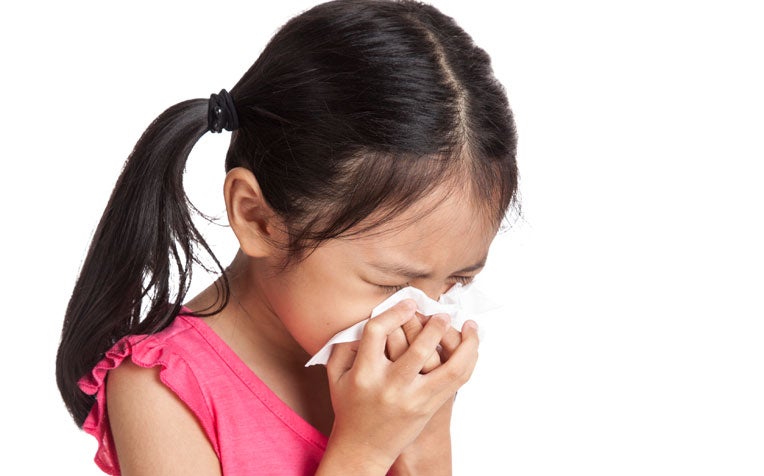
Acute bronchitis is common in children but is generally mild and resolves on its own.
A dry cough that progresses to a mucus-filled cough may be an early sign of bronchitis, an infection of the respiratory tract. Bronchitis occurs when the bronchi, the tubes that carry air to and from the lungs, become inflamed. This causes the lining of the bronchi to swell and produce mucus, leading to a wet cough, also called a productive cough.
Acute bronchitis and chronic bronchitis
There are two types of bronchitis – acute bronchitis and chronic bronchitis. Acute bronchitis, common in children, is a mild condition usually caused by a virus and resolves on its own, typically after two to three weeks. In the more serious chronic bronchitis, only seen in adults, particularly smokers, the patient can suffer from recurring bronchitis every month.
While acute bronchitis in children is usually caused by a virus, in some cases it can be due to other organisms, for example atypical bacteria such as Mycoplasma pneumoniae or Chlamydia pneumoniae.
Acute bronchitis symptoms
Acute bronchitis in children often starts with the common symptoms of a respiratory infection, such as a runny nose, cough and fever.
“Despite these symptoms, children with acute bronchitis don’t usually look too unwell. A worsening cough, phlegm and breathlessness may occur after a few days when the infection progresses to the lower airways. Occasionally, the child may wheeze,” says Associate Professor Anne Goh, Head and Senior Consultant, Allergy Service, KK Women’s and Children’s Hospital (KKH), a member of the SingHealth group.
In cases where symptoms worsen, the child could be at risk of developing pneumonia, a complication of acute bronchitis. However, most children recover without any complications.
To diagnose acute bronchitis in your child, the doctor will carry out a physical examination and take the child’s medical history. A chest x-ray and other tests may be undertaken to rule out more serious lung conditions. If the child is suspected to have asthma, additional tests may be done.
Acute bronchitis treatment
“The management of bronchitis is usually symptomatic. As the cough is usually full of phlegm, a mucolytic may be useful to clear and loosen the mucus. However, a cough suppressant should not be prescribed,” says Adj A/Prof Goh.
Antihistamines can be given to control the runny nose. Antibiotics are not effective in the treatment of acute bronchitis caused by a virus.
Drinking fluids to stay hydrated and breathing moist air from a humidifier may also help in the management of acute bronchitis symptoms.
Is a nebuliser effective in acute bronchitis treatment?
“A nebuliser is not always necessary unless the child is wheezing and has demonstrated an improvement in the wheeze with nebulisation,” says Adj A/Prof Goh.
Can you take steps to prevent acute bronchitis?
There is no definite preventive measure for bronchitis. However, general good hygiene can be practised.
Regular hand washing is a good practice to prevent the spread of infection. It is also important to limit contact with individuals suffering from the flu.
“Most cases of acute bronchitis eventually resolve without the need for medical intervention,” says Adj A/Prof Goh.
Ref: R14














 Get it on Google Play
Get it on Google Play